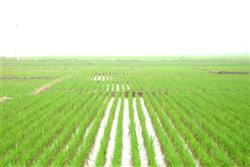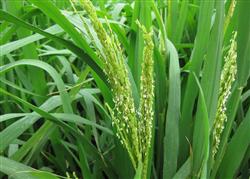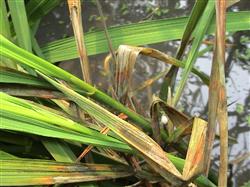How should rice cultivation be managed?

How should rice cultivation be managed? Please introduce the management methods for planting rice can refer to the following methods: first, water-saving irrigation technology during rice growth period should adopt water-saving technology, and irrigation and drainage should be carried out according to the water demand characteristics and requirements of rice growth stages. it is mainly divided into deep water turning green, shallow water tillering, deep water booting and heading, diving maturity. In the period of returning to green, because the root of the seedling is damaged, the absorption of water is less, and the leaf evaporation is large, the seedling must turn green in deep water after transplanting. In order to prevent physiological water loss, the water depth is about 2 to 3 centimeters. If the irrigation is too deep, the nutrients decompose slowly, which is disadvantageous to the tillers; the booting and heading stage is the period when rice needs the most water in its life, especially in the meiosis stage, which is more sensitive to water. At this time, the lack of water will lead to the degeneration of spikelets, resulting in shorter spikes, fewer grains and more empty shells, so it is necessary to maintain a 2 cm water layer in the field during booting and heading stage. Measures to prevent low temperature chilling injury Rice encounters periodic low temperature and continuous drizzle. The water absorption of pollen is easy to break and the empty shell increases. If early frost occurs in early September, rice can not be milked normally. When the wind speed is too high, the rice organs are directly damaged and the empty grains are increased, which directly affects the seed setting rate of rice and reduces the yield. Preventive measures: 1. Select good varieties with strong stress resistance, cultivate strong seedlings, increase silicon fertilizer, increase leaf toughness, promote root development, prevent leaf sagging, reduce shading, and create a good light environment. Improve stress resistance. two。 At the heading stage of rice, pay attention to the weather changes. When the temperature is below 17 ℃, the water layer should be deepened by 15cm to 17cm, and the water should be kept warm. After the temperature rises, the original water layer will be restored to facilitate the normal ripening of rice. 3. Without affecting the yield, properly reducing the application amount of nitrogen fertilizer and increasing potassium fertilizer, starting from promoting flower fertilizer, applying at the same time at each leaf age can enhance the ability of rice plant to absorb potassium fertilizer, reduce side effects and increase grain weight. Increase the yield of rice. Third, the proper harvest time will directly affect the appearance quality, taste quality and yield of rice. If the harvest is too early, the grain is not fully mature, there are many blighted grains and green grains, the rice yield is low, the rice quality is poor, and the harvest is too late. Grain nutrient backflow, yield reduction, vulnerable to early frost, stem lodging, thick rice husk, dark and dull rice quality, etc., resulting in direct economic losses. Therefore, not being able to harvest in time has a great impact on the yield. When the ear axis dries up and down, 2/3 of the branches in the upper part of the ear turn yellow. The best harvest time is when the grains in the lower part of the ear are shaped and hardened. Click to get more rice planting techniques click to get more food crop planting techniques
- Prev

How to manage moisture at heading and fruiting stage of rice?
How to manage moisture at heading and fruiting stage of rice? Please introduce that the middle and last ten days of July is the period when rice enters the period of heading and fruiting. The scientific nature of water management is very important to the yield and yield of rice. First, heading and flowering stage is the period when rice is sensitive to water. Its sensitivity is second only to the late booting stage.
- Next

What are the diseases and insect pests of rice?
What are the diseases and insect pests of rice? Please introduce the control methods of rice diseases and insect pests, such as rice blast, sheath blight, rice stem borer, rice planthopper, rice red spot black foam cicada, which are harmful to rice and should be paid attention to. Control methods can refer to the following methods: Rice blast: long-term irrigation in deep water or excessive drought.
Related
- The first cup of black tea in spring, the flavor and history of tea gardens in Kenya, Africa
- The computer can not only choose potatoes, but also grow tea rice. AI will grow winter oolong tea champion.
- It is not only the inflated tea bitten by insects, but also engraved with the four seasons tea in Beipu.
- The Oriental Beauty Tea Festival in Zhuxian County takes the stage at the weekend to experience the plus-size feast of oil tea.
- & quot; Oriental Beauty Tea & Exploration of Emei in Hsinchu, the hometown of quot;
- The new variety of strawberry "Tainong 1" dessert is the first choice with mellow aroma. Crimson gorgeous
- History of Tea in Taiwan: from Wild Inner Mountain to Export Tea Garden
- Two types of Taiwan Oriental Beauty Black Tea won the British three-Star Award for Childhood Tea Xiang Zhang Jiaqi changed from pilot to champion tea maker.
- Banana species and varieties: the planting history of Taiwan Xianren banana and dwarf banana is long, is banana disease resistant?
- Coffee planting Technology: Qianjie Coffee from Seedling to harvesting

